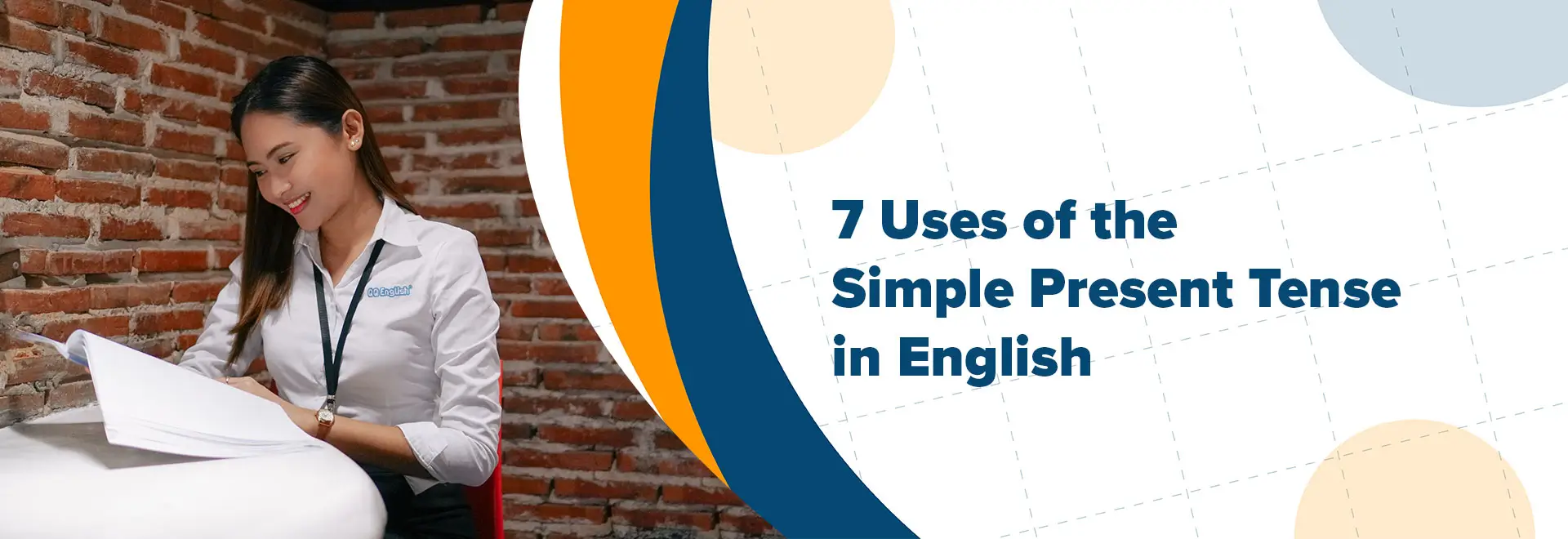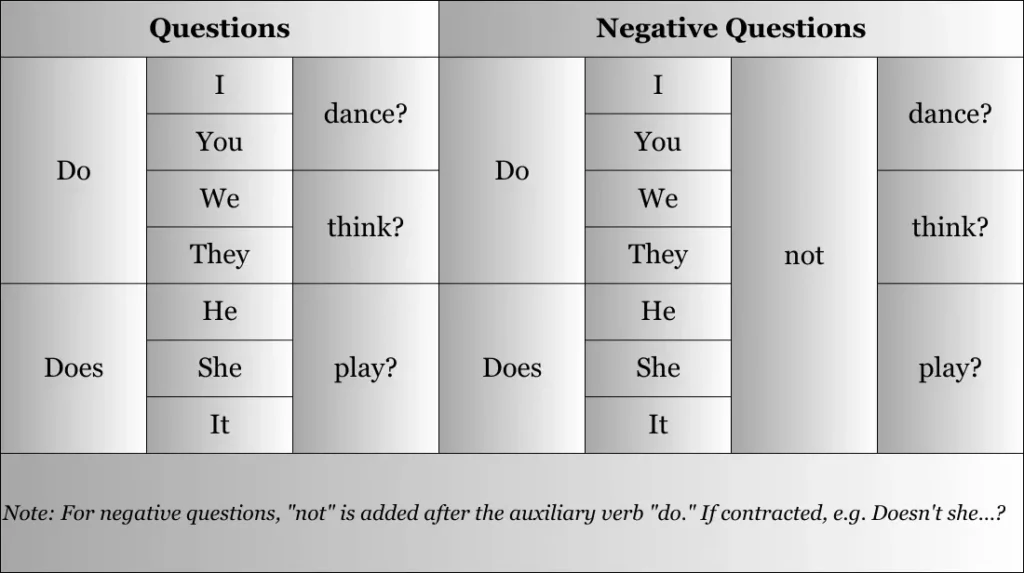
Simple Present Tense: Examples and How to use it
What is the Simple Present Tense?
Verb tenses in English are quite challenging to learn and master. They sometimes confuse language learners. The present tense in English is not an exception. It has its own structure and appropriate use that are usually misused by students.
Have you ever asked yourself how to use the present tense in English? For example, “I study English” and “I am studying English” convey the same intended meaning but actually differ in context. The sentence “I study English” is in the present form, while the sentence “I am studying English” is in the present continuous form.
You must be confused about the two tenses where in fact they are both in the present form. However, we have to consider the context of each sentence and examine the structure as well as the semantics. The present tense in English may be far different from the concept of the present tense in your own language, which may result in a different perception of the tense when used in the new language.
The present tense in English is not too easy to understand and analyze. There are 4 types of present tense in English simple present, present continuous, present perfect, and present perfect continuous tenses.
In this article, we will focus more on the simple present tense in English and give you further insights into it. This article is mainly intended for language learners to learn more about the present tense in English and understand it better for proper usage in sentences.
Present Simple Rules
Check out the timeline below to understand this tense.
For example: He lives in a house by the lake.

The sentence means that the doer of the action permanently lives in a house by the lake. He does not change his address or transfer to any other areas.
Another example:
The Pacific Ocean is the largest ocean on earth.

Notice that the sentence talks about the truth about the Pacific Ocean and that it is a fact that it is the largest ocean on Earth. This is an example of a permanent situation.
Learning the simple present tense in English is essentially helpful for learners to understand its concept. This is considered a timeless tense because it expresses the idea that actions are repeatedly done or convey general truths.
Please note that simple present or present simple is acceptable.
How to use Simple Present Tense
- Of all the tenses, the simple present tense in English is used to denote truths about the following:
◙ habitual actions: My mother smokes 20 cigarettes a day.
◙ general truths: Ice melts when heated.
◙ permanent human truths: My father lives on the farm.
◙ recurrent truths: Typhoons usually arrive in my country in December.
◙ internal truths: I know you’re coming.
◙ mathematical and scientific truths: Two plus two equals four (2+2=4).
◙ eternal truths: The 10 commandments tell us to honor our parents.
◙ geographical truths: Mt. Fuji is located in Japan.
◙ permanent human truths: I like soda, but my mom likes beer.
- The simple present tense is also used to give instructions, directions, or demonstrations
-
-
-
- Give me the book, please.
- Go straight to the Green Street.
- Saute the garlic, onions, and tomatoes, then add water.
-
-
- The simple present tense in English is often used as a narrative device especially when expressing dramatic effects about something, usually in sports.
-
-
-
- He passes the ball to Player 23.
- Player 10 smashes the shuttlecock with force.
- Coach Lyndon talks to the injured player.
-
-
- The simple present is used in headlines and captions.
-
-
-
- President Park warns illegal recruiters of their actions
- The Philippines bags numerous awards at the South East Asian Games
- Taylor Swift is still number one in Swifties’ hearts
-
-
- The simple present tense is used to describe feelings.
-
-
-
- I feel anxious about my new job.
- Maria feels scared when she sees her professor.
- My mother feels excited about my sister’s graduation.
-
-
- With a future time marker, the simple present tense in English gives a timetable for the future.
-
-
-
- My plane departs at 3:00 P.M.
- You must not be late because the meeting starts at 9 o’clock.
-
-
- The simple present tense uses the base form of the verb. However, it is better to observe the usage depending on the plurality or singularity of the subject and verb in the sentence.


Simple Present Tense Examples
Here are some examples of sentences using the Present Simple tense:
Affirmative Statements:
- She works in a hospital.
- I eat breakfast every morning.
- The sun rises in the east.
Negative Sentences:
- He doesn’t like coffee.
- They don’t play tennis on Sundays.
- It doesn’t rain much in the desert.
Questions:
- Do you speak Spanish?
- Does she play the piano?
- What time does the movie start?
General Facts and Truths:
- Water boils at 100 degrees Celsius.
- Cats chase mice.
- The Earth revolves around the Sun.
Talking About Daily Routines:
- She wakes up at 6 AM every day.
- He goes to the gym three times a week.
- We take the bus to work.
Schedules or Regular Events:
- The train leaves at 8 o’clock every morning.
- The store opens at 9 AM and closes at 6 PM.
- The class starts at 10:30 AM on Mondays.
For the simple present tense in English, the question forms are usually answered by a “yes” or a “no” whether it is a positive or a negative question.
Things to remember when using the simple present tense in sentences
- In the third person singular, the verb that ends in “-y” changes to “i” and is added with “-es” (ex: cry – cries, dry – dries).
- Verbs ending in sibilant clusters (ss, sh, ch, and x) are added with the suffix “-es” in the third person singular (ex: kiss – kisses, teach – teaches, smash – smashes, fix – fixes).
- Verbs ending in a single “o” are added with the suffix “-es” in the third person singular form (ex: go – goes, do – does).
- The be-verbs are always irregular: am – is – are.
- Verb forms of “to have” are irregular: has – have – have.
- Adding the auxiliary verb “do” in the base form of the verb does not really sound like the present tense in English, but rather an emphatic form to emphasize the action (ex: I do write my letters in English instead of I write my letters in English).
Common Learner Error
- Some learners use a different tense (e.g. present continuous) instead of the present tense.
- In speaking, learners may not observe the singularity of the verb (Ex: She take the test).
- Not all future events use future tense markers; verbs in the present tense can also be used (For example I will call you when I get home).
- Sometimes, the auxiliary verb “do” is attached to the main verb (e.g. I do take the bus).
- The learners’ use of simple present tense in English is influenced by their L1 – meaning, they translate the sentence word for word which compromises the meaning.
The Importance of Learning the Present Tense in English
As a language learner, your goal is to primarily improve your grammatical, pronunciation, and vocabulary skills. It is crucial that you are aware of the correct usage of the present tense in English to communicate effectively with others.
Learning the present tense in English is easy when you put your heart into it and you are amenable to the appropriateness when using it in sentences.



